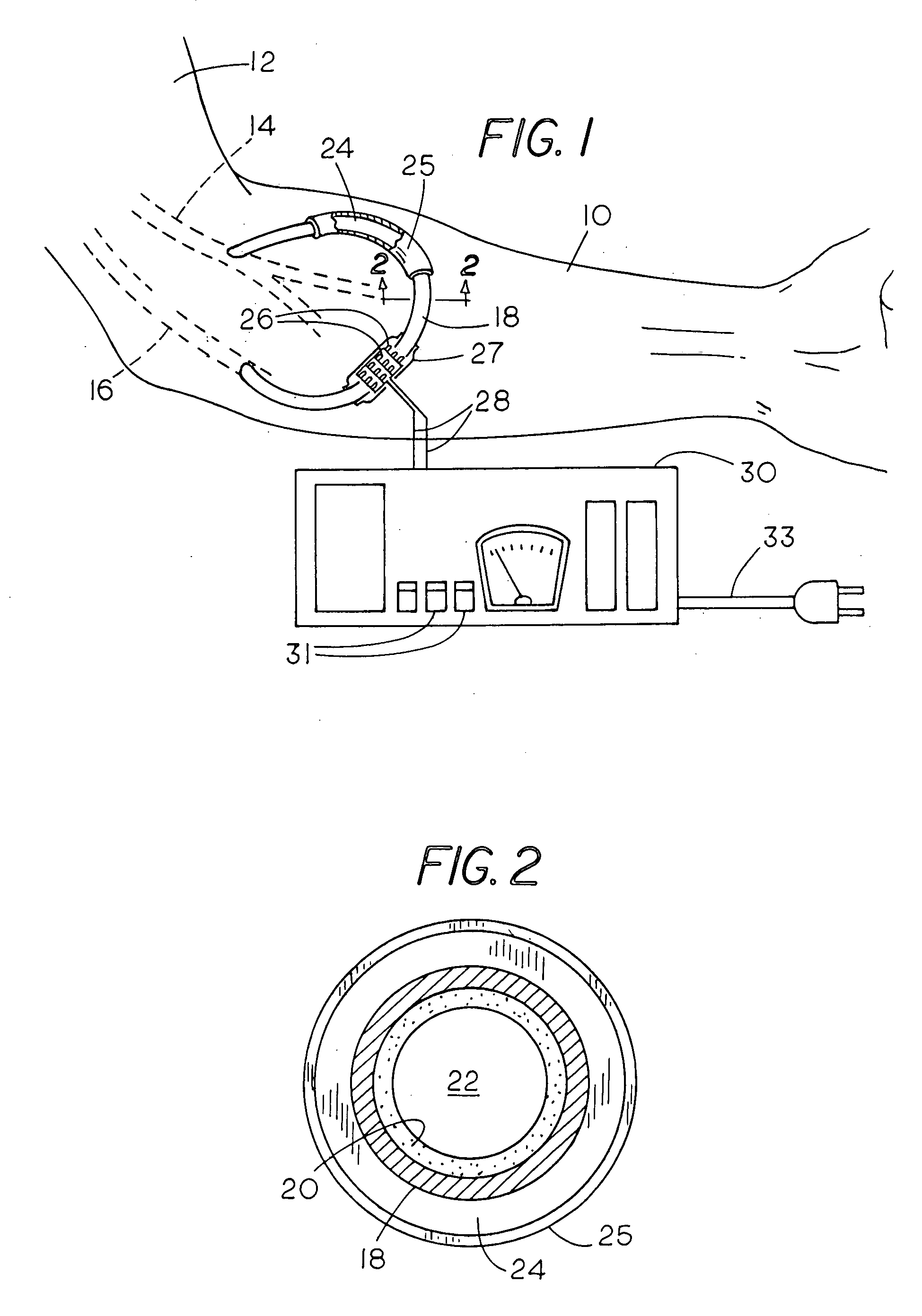Method and apparatus for preventing dialysis graft intimal hyperplasia
a dialysis graft and intimal hyperplasia technology, applied in the field of medical science, can solve the problems of inability to completely satisfy the proposed solution, inability to produce allergic reactions, side effects, anomalies, etc., and achieve the effects of preventing intimal hyperplasia, and preventing cell division or growth
- Summary
- Abstract
- Description
- Claims
- Application Information
AI Technical Summary
Benefits of technology
Problems solved by technology
Method used
Image
Examples
Embodiment Construction
[0014] The present invention provides a method and apparatus for the avoidance and treatment of intimal hyperplasia and is especially well suited for use in hemodialysis grafts or access. Dialysis graft intimal hyperplasia (GIH) occurs in a large segment of the hemodialysis (HD) population and is the cause of significant cost, morbidity and mortality in the HD population. Greater than 50% of HD patients in many areas have expanded polytetraflouroethylene (PTFE) grafts.
[0015] In accordance with the present invention, the PTFE graft is coated before placement with an anticarcinogen or other agent for preventing cell division or growth. Thus, intimal hyperplasia, brought about by various growth factors, is inhibited in accordance with the invention by drugs such as, but not limited to, sirolimus as well as other agents for controlling cell division as described more fully below. The graft can also be provided with a source of light energy arranged to direct light onto the graft for re...
PUM
| Property | Measurement | Unit |
|---|---|---|
| wavelengths | aaaaa | aaaaa |
| wavelength | aaaaa | aaaaa |
| wavelength | aaaaa | aaaaa |
Abstract
Description
Claims
Application Information
 Login to View More
Login to View More - R&D
- Intellectual Property
- Life Sciences
- Materials
- Tech Scout
- Unparalleled Data Quality
- Higher Quality Content
- 60% Fewer Hallucinations
Browse by: Latest US Patents, China's latest patents, Technical Efficacy Thesaurus, Application Domain, Technology Topic, Popular Technical Reports.
© 2025 PatSnap. All rights reserved.Legal|Privacy policy|Modern Slavery Act Transparency Statement|Sitemap|About US| Contact US: help@patsnap.com



